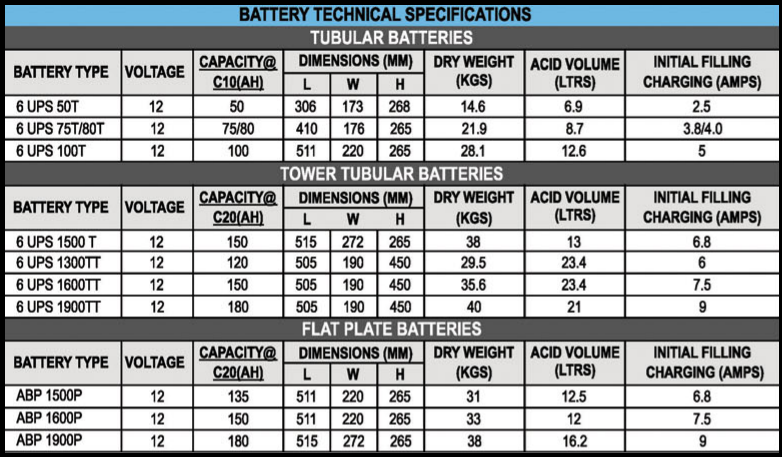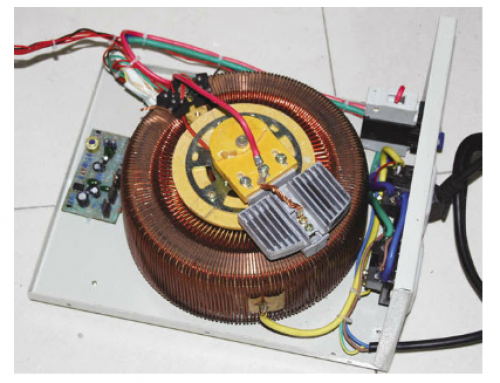If you follow this link: http://www.amco.co.in/products.php?id=9 , you can see how a battery’s weight increases with it’s Ah rating. You need bigger batteries to store more electric charge. The capacity of a battery is related to the quantity of active materials and electrolytes in it as well as the surface area of the plates. Electric current is the flow of electrons. Each electron has a charge of 1.60217657×10−19 coulombs. 1 Ampere is 1 Coulomb/second, i.e, it is the flow of 6.241509324×1018 electrons per second. 1 Ampere-hour is a unit of charge and is equal to 3600 Coulombs. Let us consider a battery whose Capacity is 50 Ah like the 6UPS 50T, shown in the figure. Simplistically speaking, you could draw 50A from it in one hour to completely discharge it. But then you are likely to spoil it. There is an ideal design time for any battery for complete charge/discharge. This can be 10h or 20h for example. The C-Rating of a battery (in A) is defined as it’s capacity (in Ah) divided by the prescribed duration of charge/discharge (in h). The 6UPS 50T, with a 50Ah capacity and a 10h preferred time of discharge, therefore has a C-Rating of 50Ah/10h = 5A. It is best not draw more than 5A from this battery at any time. Featured Image:
- The Featured Image is from http://www.amco.co.in/download.php?id=1&file=143







Leave A Comment
You must be logged in to post a comment.